Long Fermentation Pizza Dough, with only 2 grams of yeast, perfect for making fantastic pizzas. This is the tried-and-tested recipe I’ve been using for years and it’s truly exceptional. I usually prepare the dough the night before, place it in a container with a lid, and store it in the refrigerator; the next day, I divide it into dough balls and it’s ready to use.
The long fermentation times allow for a final result that is light, well-aerated, and easily digestible. By long times, I mean at least 12 hours of fermentation, or even more if prepared the night before for the following evening. If you need to speed up the process, just double the amount of yeast.
If you’re looking for a pizza dough like the one from a pizzeria, this recipe is perfect. Follow all my tips at the end of the recipe to achieve a perfect result.
Besides the classic pizza with tomato, you can also make excellent flatbreads like the White Pizza with Stracchino, Cherry Tomatoes, and Arugula or the White Pizza with Prosciutto Crudo and Buffalo Mozzarella.
But now let’s see together how to make the recipe for Long Fermentation Pizza Dough. Prepare the ingredients and let’s start.
And if you try it, don’t forget to let me know in the comments on my Facebook page HERE. I’ll be waiting for you.
Gabriella
If you are a fan of leavened doughs, also try:
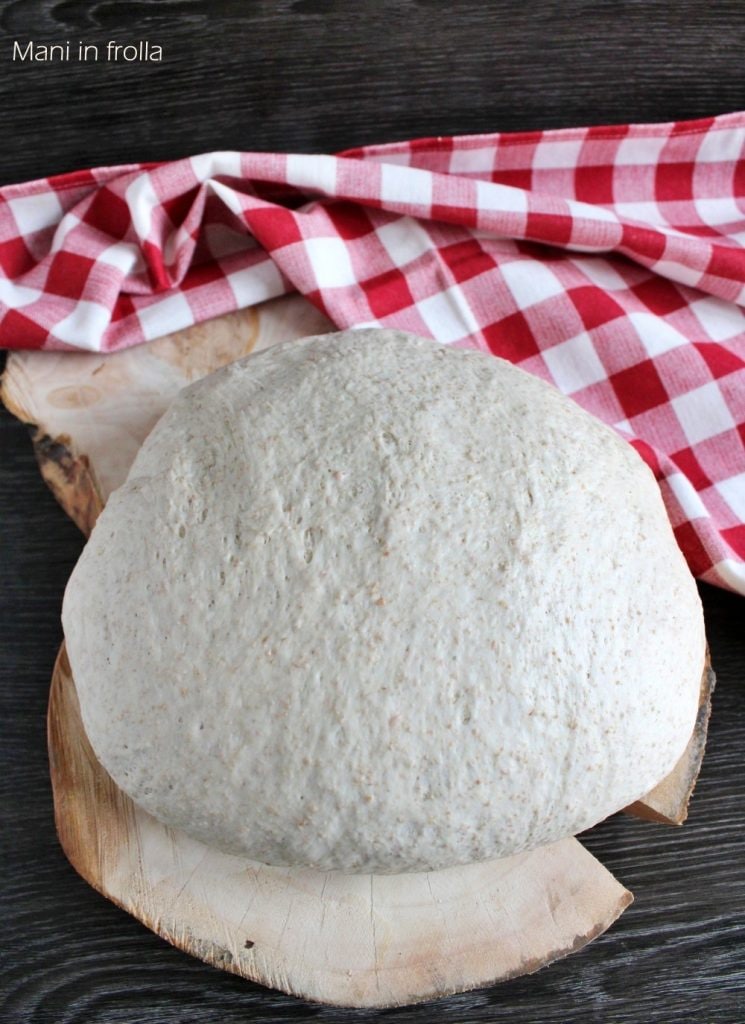
- Difficulty: Very easy
- Cost: Economical
- Rest time: 12 Hours
- Preparation time: 20 Minutes
- Portions: 6 pizzas
- Cooking methods: No cooking
- Cuisine: Italian
Ingredients
- 8 cups cups flour
- 2 g dry yeast
- 2 1/2 cups cups water (at room temperature – 60% hydration)
- 2 tbsp tbsp olive oil
- 1 1/2 tbsp tbsp salt
Tools
To make the Long Fermentation Pizza Dough you need:
- 1 Stand Mixer
- 1 Pastry Board
- 1 Scale
- 1 Container
- 1 Container
Steps
First, place the flour and yeast in the bowl of the stand mixer and attach the dough hook; then, start the mixer and let it run for about 2 minutes (this step is to aerate the flour).
After that, add all the water in 3 – 4 stages, continuing to knead. As soon as you see that the dough has come together (it takes at least 4 – 5 minutes), add the oil and continue kneading for another 3 – 4 minutes.
Finally, gradually add the salt, continue kneading until you obtain a smooth and compact dough. Remove it from the mixer, give it 2 – 3 folds and place it in a container with a lid: close it and store it in the refrigerator for the entire night.

If you need to prepare the pizza for lunch, take it out of the fridge around 8:00 AM and leave it at room temperature for at least a couple of hours. Here it is after the night of resting in the refrigerator.

Then divide it into 6 pieces weighing about 272 g each (or 7 pieces weighing about 233 g each for slightly smaller pizzas), form balls and let them rest, spaced apart, in a large enough container, for about 1 hour: they should double in volume.
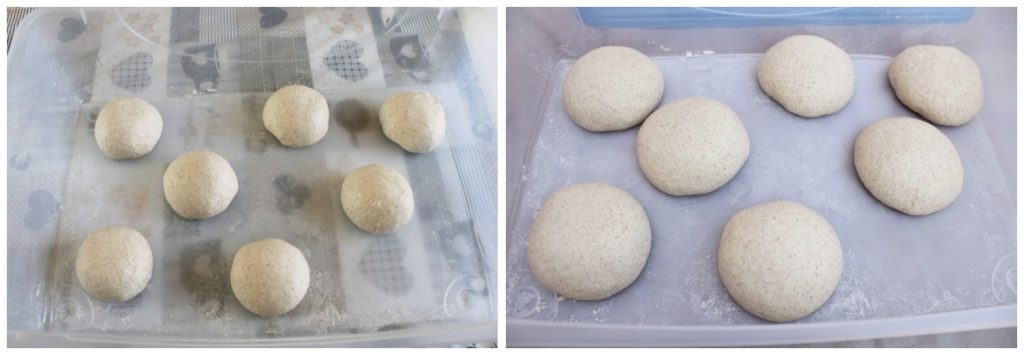
At this point, they are ready to be worked: coat the balls in semolina,
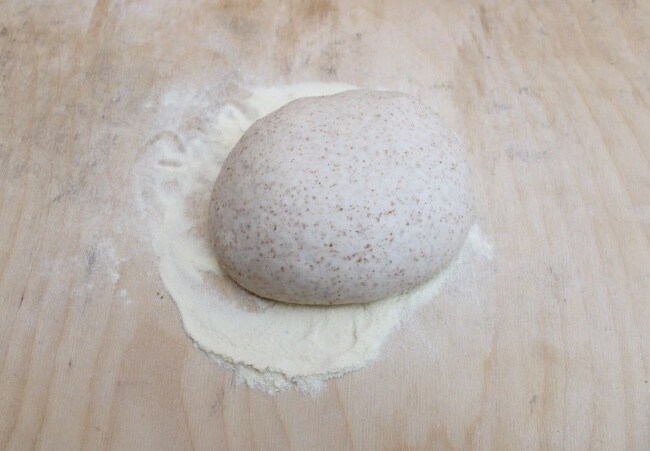
then flatten them with your hands and stretch them out (you can use a rolling pin for this step) until you get the desired size. And voila, it’s ready to be topped and baked.
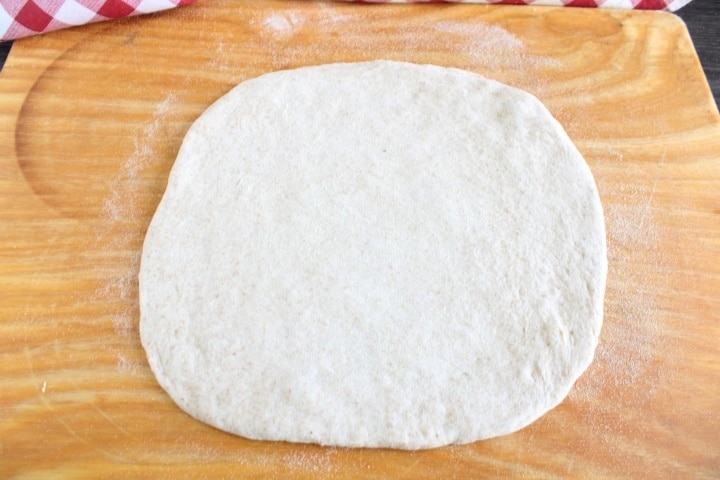
Ready to use!
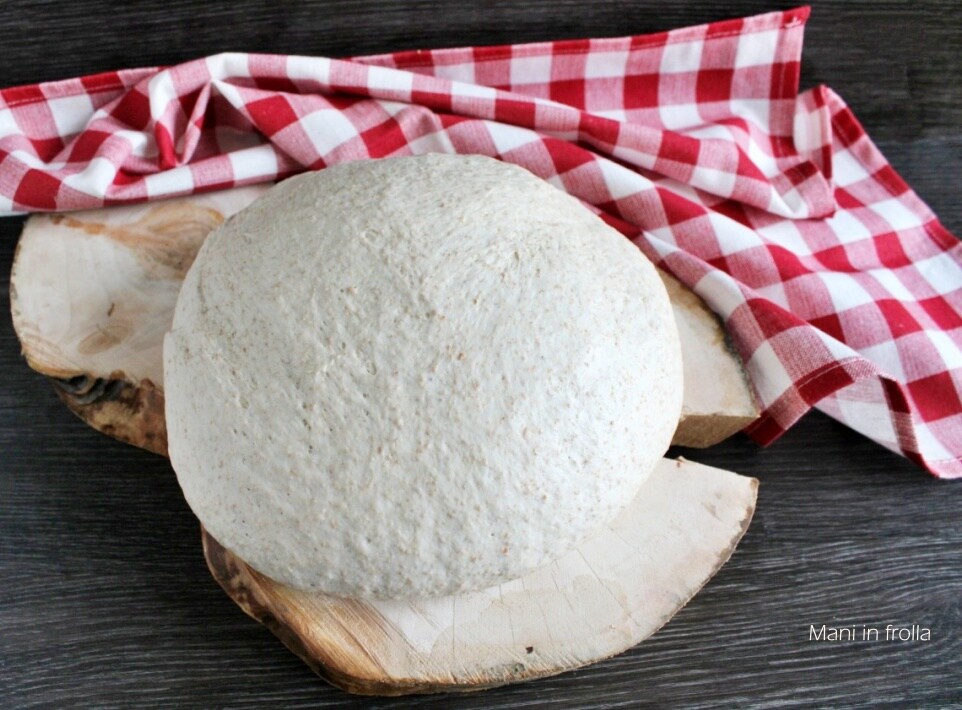
Until the next recipe.
Storage
You can store the Long Fermentation Pizza Dough in the refrigerator (in the lower part) for 5 – 6 days, sealed in an airtight container.
Tips
– If you see that the dough gets warm while kneading, it’s better to stop, let it rest, and then continue, because otherwise the yeast won’t work at high temperatures. In the summer, it’s recommended to use cold water.
– Water: the amount of water normally used is equal to 60% of the weight of the flour when talking about type 0 or 00 flour. So if you have 1 kg of flour, you need 600 ml of water. If less refined flours are used, the amount can reach 70%. For this reason, add a little at a time: you should still obtain a well-incorporated, smooth, and homogeneous dough.
– Flour: The recipe calls for 1 kg of flour. Type 0 flour is perfectly fine; I usually use 500-600 g of type 1 (or 2) flour and the rest type 0. Of course, you can use the flour you prefer, but make sure to use the right amount of water because, as mentioned, not all flours have the same absorption rate.
– Yeast: If you have time to let the dough rise overnight, 2 g of yeast for 1 kg of flour is more than enough. If you don’t have much time, 5 g of yeast for 5 – 6 hours of rising is sufficient. Obviously, the shorter the rising time, the more yeast you need to use.
– If I have leftover dough balls, I keep them in the fridge in a container and use them during the week.
Organizing rising times
I prepare the dough on Friday evening for Saturday evening. So, I prepare the dough around 8:00 PM – 9:00 PM on Friday and put it in the refrigerator.
The next day, around 11 AM, I take it out of the fridge, remove the lid, and let it rest in the oven, with the light off, away from cold drafts.
Around 3:00 – 4:00 PM, I divide it into balls and let them rest in a covered container, for a second rise.
By 7:00 – 8:00 PM, they are ready to be stretched, topped, and baked.
Storage
You can store the Long Fermentation Pizza Dough for 5 – 6 days in the refrigerator and then proceed as per the recipe starting from the steps for the 2nd day.
You can store the Long Fermentation Pizza Dough for 5 – 6 days in the refrigerator and then proceed as per the recipe starting from the steps for the 2nd day.
IF YOU LIKE MY RECIPES, YOU CAN ALSO FOLLOW ME ON MY FACEBOOK PAGE HERE OR ON PINTEREST HERE OR EVEN ON INSTAGRAM HERE
“Sponsored links present on the page”

